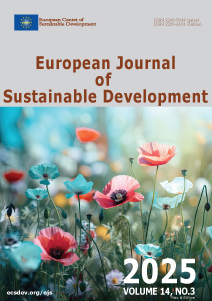Biochar - a Versatile Outcome of Various Biomasses - Benefits and Challenges
Abstract
Biochar, a porous carbon-rich material produced by pyrolyzing biomass under limited oxygen, is gaining attention for its ability to improve soil water retention and reduce nutrient leaching. This review analyses 18 peer-reviewed studies assessing the water absorption capacity of biochars derived from various agricultural residues. It examines how feedstock type, pyrolysis temperature, and soil characteristics influence biochar performance, focusing on water retention. Findings reveal that biochars effectiveness is closely tied to its physicochemical properties, which are shaped by both feedstock composition and pyrolysis conditions. Biochars produced at low (300–400°C) and high (?600°C) temperatures enhanced water retention through different mechanisms: increased hydrophilicity at lower temperatures and greater surface area and porosity at higher ones. Sandy soil showed the greatest improvements, with some studies reporting up to a 628% increase in water holding capacity. These results suggest that biochar can reduce fertilizer use and nutrient runoff, promoting more sustainable agriculture and healthier aquatic ecosystems. The study highlights the need for standardized methods to assess water absorption capacity and calls for long-term field studies to validate laboratory findings under real-world conditions.
Key Words: Biochar, Water Retention Capacity, Pyrolysis Temperature, Feedstocks, Soil Moisture Dynamics, Nutrient Leaching
Downloads
Published
How to Cite
Issue
Section
License

This work is licensed under a Creative Commons Attribution-NonCommercial 4.0 International License.





